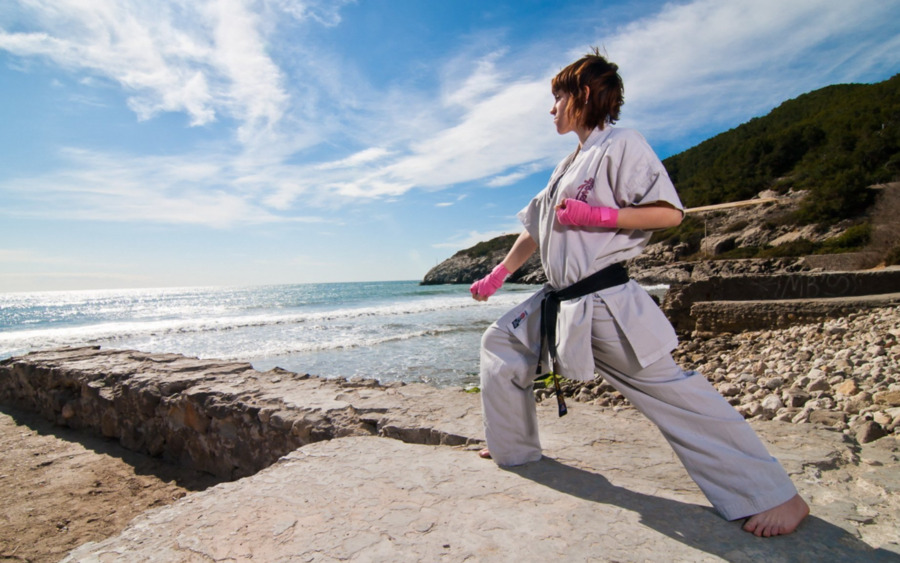
Karate, a martial art originating from Japan, has transcended cultural boundaries to become a global phenomenon, including in the global hub of Dubai at leading fitness clubs like stamina11.com. Discover the deep-rooted history, diverse styles, and numerous physical and mental benefits make it a captivating practice for individuals of all ages and backgrounds. In this comprehensive guide, we delve into the fascinating world of karate, exploring its origins, evolution, various styles, and the wide-ranging benefits it offers.
History of Origin and Development
The roots of karate can be traced back to the Ryukyu Kingdom, modern-day Okinawa, Japan, where it emerged as a form of unarmed combat influenced by Chinese martial arts. Initially developed as a means of self-defense by Okinawan peasants, karate evolved over centuries through a blend of indigenous fighting techniques and external influences. It wasn’t until the early 20th century that karate gained widespread recognition and was introduced to mainland Japan, paving the way for its global dissemination.
Differences from Other Martial Arts
Karate distinguishes itself from other martial arts through its emphasis on striking techniques, utilizing punches, kicks, knee strikes, and open-hand techniques to incapacitate opponents. Unlike grappling arts like judo or Brazilian jiu-jitsu, which focus on ground fighting and submission holds, karate primarily involves stand-up combat and self-defense maneuvers. Additionally, karate places a strong emphasis on mental discipline, character development, and ethical conduct, distinguishing it as a holistic martial art that nurtures both body and mind.

Styles of Karate
Karate encompasses a diverse array of styles, each with its unique philosophies, techniques, and training methodologies. From traditional Okinawan styles to modern interpretations, some of the most prominent karate styles include:
Shito-ryu: Founded by Kenwa Mabuni, Shito-ryu combines traditional Okinawan karate with elements of Chinese martial arts, emphasizing fluid movements and dynamic techniques.
Goju-ryu: Developed by Chojun Miyagi, Goju-ryu incorporates both hard and soft techniques, drawing inspiration from Chinese kung fu and focusing on breathing exercises, kata, and close-range combat.
Wado-ryu: Founded by Hironori Ohtsuka, Wado-ryu combines karate with principles of jujutsu and aikido, emphasizing evasion, redirection of force, and fluid motion.
Shotokan: Established by Gichin Funakoshi, Shotokan is one of the most widely practiced karate styles, known for its deep stances, powerful strikes, and linear movements.
Kyokushinkai: Founded by Masutatsu Oyama, Kyokushinkai is a full-contact karate style characterized by its emphasis on practical techniques, rigorous training regimen, and competitive sparring.
Ashihara: Developed by Hideyuki Ashihara, Ashihara karate incorporates elements of judo, aikido, and kung fu, focusing on circular movements, sweeps, and takedowns.
Fudokan: Founded by Sensei Azadani, Fudokan karate emphasizes speed, efficiency, and precision in techniques, with a focus on kata and kumite.
Shorin-ryu: Originating in Okinawa, Shorin-ryu is known for its rapid footwork, quick strikes, and compact stances, making it ideal for close-quarters combat.
Kudo: A hybrid martial art combining karate, judo, and Muay Thai, Kudo emphasizes practical self-defense techniques, full-contact sparring, and ground fighting.
Benefits of Karate:
Karate offers a wide range of physical, mental, and emotional benefits for practitioners of all ages:
Physical Fitness: Karate training improves cardiovascular health, strength, flexibility, and coordination, promoting overall fitness and well-being.
Self-Defense Skills: Practitioners learn effective self-defense techniques to protect themselves and others in real-life situations.
Mental Discipline: Karate instills discipline, focus, and perseverance, helping individuals develop mental resilience and fortitude.
Character Development: Through the practice of karate, individuals cultivate values such as respect, humility, integrity, and self-control, contributing to personal growth and character development.
Stress Relief: Engaging in karate training provides an outlet for stress and tension, promoting relaxation, mindfulness, and emotional balance.
Starting Age and Considerations
Karate is a versatile martial art suitable for individuals of all ages, from young children to seniors. Children as young as four or five years old can begin learning basic karate techniques in a safe and supportive environment. When choosing a karate dojo or training facility, factors such as instructor credentials, class size, curriculum, safety protocols, and overall atmosphere should be taken into consideration to ensure a positive and enriching experience.

Stamina11: Your Destination for Karate Training
Stamina11 is a premier martial arts academy located in Dubai, offering comprehensive karate programs for practitioners of all levels and ages. Our experienced instructors provide expert guidance and personalized instruction, fostering a supportive and empowering learning environment. With state-of-the-art facilities, a diverse community of practitioners, and a commitment to excellence, Stamina11 is your ultimate destination for karate training in Dubai.
Conclusion
Karate, with its rich history, diverse styles, and myriad benefits, continues to inspire and captivate individuals worldwide. Whether practiced for self-defense, physical fitness, personal development, or competitive sport, karate offers a transformative journey of growth, empowerment, and self-discovery. With dedication, perseverance, and the right guidance, anyone can embark on the path of karate and experience its profound impact on mind, body, and spirit.

Snowboarder, doer, band member, Mad Men fan and front-end developer. Acting at the nexus of simplicity and programing to craft meaningful ideas that endure. Concept is the foundation of everything else.
